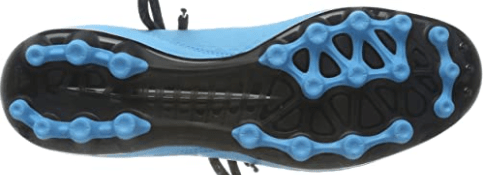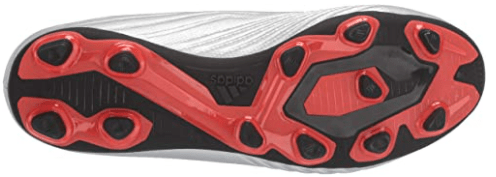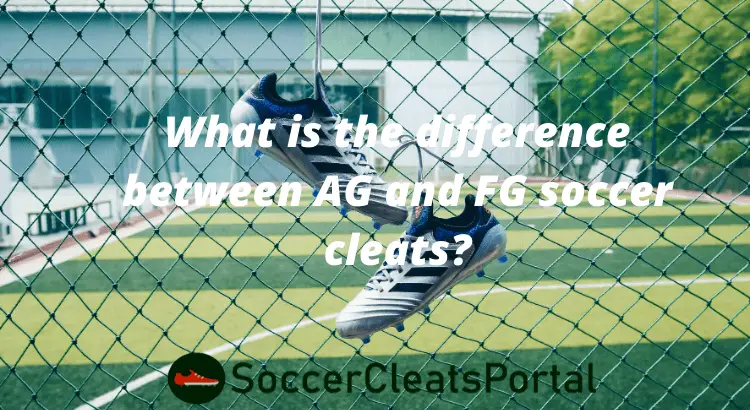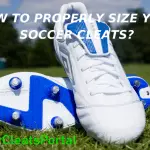Soccer is a sport that can be played on various surfaces. Although natural grass is the most common surface, artificial grass pitches have become very popular especially in places with extreme weather conditions. Those surfaces have different characteristics so soccer cleat brands have been forced to manufacture different stud configurations depending on the surface you are going to play.
One of the most common questions that soccer players have is that somebody who plays on both firm natural grass and artificial grass playing surfaces but only wants to buy one pair of boots which stud pattern do they buy? Well technically you can play with FG boots on artificial ground pitches but this is not advisable due to the loss of traction and comfort you may experience, the increased possibility of potential injuries, and the quickest deterioration of your cleats. When it comes to playing in firm ground pitches with AG boots the decrease in your overall performance is the only problem you may experience.
If you want to use FG stud patterns on soft natural grass you can definitely get away with it. It’s not gonna hurt the boots in any way, you’re just not going to have ideal traction. As far as wearing FG stud patterns on artificial grass is concerned this is no particularly safe. Before explaining why let’s see which are the main differences between these two types of cleats.
What is the difference between AG and FG cleats?
 An AG pitch can become incredibly hot and that affects your boots. It’s also very abrasive it provides far more friction and far more forces on your boots than you’re going to get on an FG or an SG pitch and the boot has to be designed around. So there are some differences between those types of cleats and those are listed below.
An AG pitch can become incredibly hot and that affects your boots. It’s also very abrasive it provides far more friction and far more forces on your boots than you’re going to get on an FG or an SG pitch and the boot has to be designed around. So there are some differences between those types of cleats and those are listed below.
- Stud length
FG cleats are longer so they will stick more in the ground. Artificial fields are harder so there is no need for the shoes to penetrate much on them. Therefore, the studs on AG boots are a little shorter.
- Stud shape
Another main difference is the shape of the molded plastic studs that both types of shoes have. FG cleats will have either triangular bladed studs or conical round one or a mix of those. On the other hand, AG cleats will most commonly have only round studs. It is very dangerous to play on an AG pitch with FG boots with blades. That bladed stud pattern is incredibly aggressive and is very likely to get stuck in the very aggressive and very sticky AG pitch type, thus increasing the possibility of damaging the knees.
- Number of Studs
AG boots will have a higher number of studs placed across the soleplate. That stud pattern on AG boots disperses some of the pressure and heat of the abrasive artificial terrains between multiple different studs instead of having it all focused in certain areas.
- Overall Construction
In general, AG specific boots do have extra reinforcements for them to cope with the much more brutal AG surface.
For example, the soleplate featured on AG boots is typically a little bit thicker in order to avoid the extra pressure from the hard artificial pitch. Also, the soleplate is made from stronger plastic materials.
Similarly, most AG boots will have an extended lip around the front. This is where the soleplate extends up to the forefoot and that is done to prevent sole separation which is the main reason the FG boots fall apart on AG pitches.
Furthermore, the studs themselves are usually designed to deal with higher temperatures that are developing in AG pitches. Sometimes there are holes in the middle of the studs in order to provide better heat distribution. They also provide less vibration and therefore have less impact on your knees and other joints which can really lead to serious injuries.
Why you should avoid playing with FG boots on AG pitches
Except for the obvious traction and comfort issues, the main reasons why you should avoid using firm ground cleats on artificial grass surfaces are listed below.
- Injury problems
FG studs are longer which means that they will stick more in the ground. So when you make fast changes of direction your boots are going to stick more in the ground while your body is going to move in a different direction so you can get some nasty injuries.
If your cleats have bladed studs, they offer too much grip which may sound like a good thing but if someone makes contact with you when your foot is planted and essentially stuck in place, that’s where you can suffer some very severe ankle and knee injuries. It’s not super common but it does happen. So bladed studs on artificial grass are something you should avoid entirely.
- Durability issues
AG surfaces are going to be much harder on your boots than natural grass playing surfaces so if you regularly play on AG, unfortunately, your boots are just not going to last as long.
AG boots are going to last longer on artificial grass than FG boots. There are a couple of different reasons for that.
– The stud pattern with numerous shorter conical studs is designed specifically to be extra grippy on artificial grass. It’s not going to be quite as aggressive as a bladed FG stud pattern which means that the forces and overall stress on the boot are not going to be as extreme.
– Number two is the construction of the soleplate featured on AG cleats. As we have seen, they are typically a little bit thicker with stronger plastic elements as the stud pressure they get is higher on AG pitches than that on firm ground. Also, find in almost every AG boot, there is an extra taping that runs around the front of the boot in order to prevent sole separation. So generally boots are bonded together in a much stronger way on an AG boot.
– The temperature of the surface is also worth noting in regards to the durability of your boots especially when you’re talking about artificial grass. Feeling your feet burning on artificial grass is a very common thing and having that more solid structure in the soleplate is going to help with the overall longevity of the product.
- Product warranty
Your product warranty is also worth discussing in regards to using FG boots on artificial grass. Because it’s a tougher surface, the boots are more likely to break. If you buy FG boots and use them on artificial grass the boots are going to be filled with turf stains. So when you send your FG broken boots that you wore on AG they have the right to refuse your warranty because you have misused their product.
Remember each pair of boots has a warranty but it’s only valid if you wear a boot on a surface they are designed for. So if you were an FG boot on AG and they rip, you won’t be able to get your money back.
What’s the solution?
Hopefully, there are some solutions to help you with the decision on which type should you buy when you are playing on firm ground surfaces but you want also to play with the same boots on artificial grass.
- Mixed stud configuration
 Solution number one is to buy something that has a mixed stud configuration that you can use on both firm natural grass and artificial grass. Adidas uses the acronym FxG, Nike calls them MG and Puma names them as FG/AG.
Solution number one is to buy something that has a mixed stud configuration that you can use on both firm natural grass and artificial grass. Adidas uses the acronym FxG, Nike calls them MG and Puma names them as FG/AG.
These FG-AG stud patterns are more targeted towards FG rather than being true AG layouts. But as a general rule of thumb if a boot is labeled as FG-AG you are 100% safe to use it on artificial grasses.
The problem here is that your options when it comes to mixed FG-AG stud patterns are going to be somewhat limited.
- FG stud patterns that feature all conical studs
As we have seen before AG cleats have only rounded studs in their soleplate. So, I would say that any stud pattern that features all conical studs that’s designed specifically to be used on firm natural grass and you really wanted to use these on AG you’re really not going to have any issue.
But this only fixes the potential injury problem. The durability of the boot is going to take a hit and then when it comes to making a warranty claim should something go wrong prematurely, which will be the case if you’re using FG boots on an artificial grass surface, you will most likely not get your money back. 
Wearing AG cleats on Firm Ground Pitches
When it comes to using AG cleats on firm ground pitches things are easier.
In fact, you should seriously consider getting an AG boot if you are playing for both surfaces for the following reasons.
– If you are on a budget I would strongly recommend picking the AG boots instead of the FG boots as they will probably last longer.
– AG cleats are a better option if you’re having trouble with your joints and you decide you just need a bit more cushioning with your impact or if you are a bit older you have some injuries.
AG boots work just fine. But if you want to get that extra performance then you’re better off getting the proper official FG boot. You will not lose traction and you will not slip that much, you’re just reducing the aggressiveness and the overall performance. And of course, you will have to put some extra effort when cleaning your AG boots as the holes that they have in the studs tend to fill with mud and they are an absolute pain to get clean.
Final thoughts
If you play on both firm natural grass and artificial grass having one pair of FG boots and one pair of AG boots is really ideal.
I realize that not everybody can afford this but this going to be the best from a safety point of view, not to mention the overall performance.
It is also going to make your boots last a lot longer because you’re rotating pairs rather than wearing the same boot every single time. And if you play a lot that can be really hard on your boots especially considering how thin and light football boots are nowadays.



